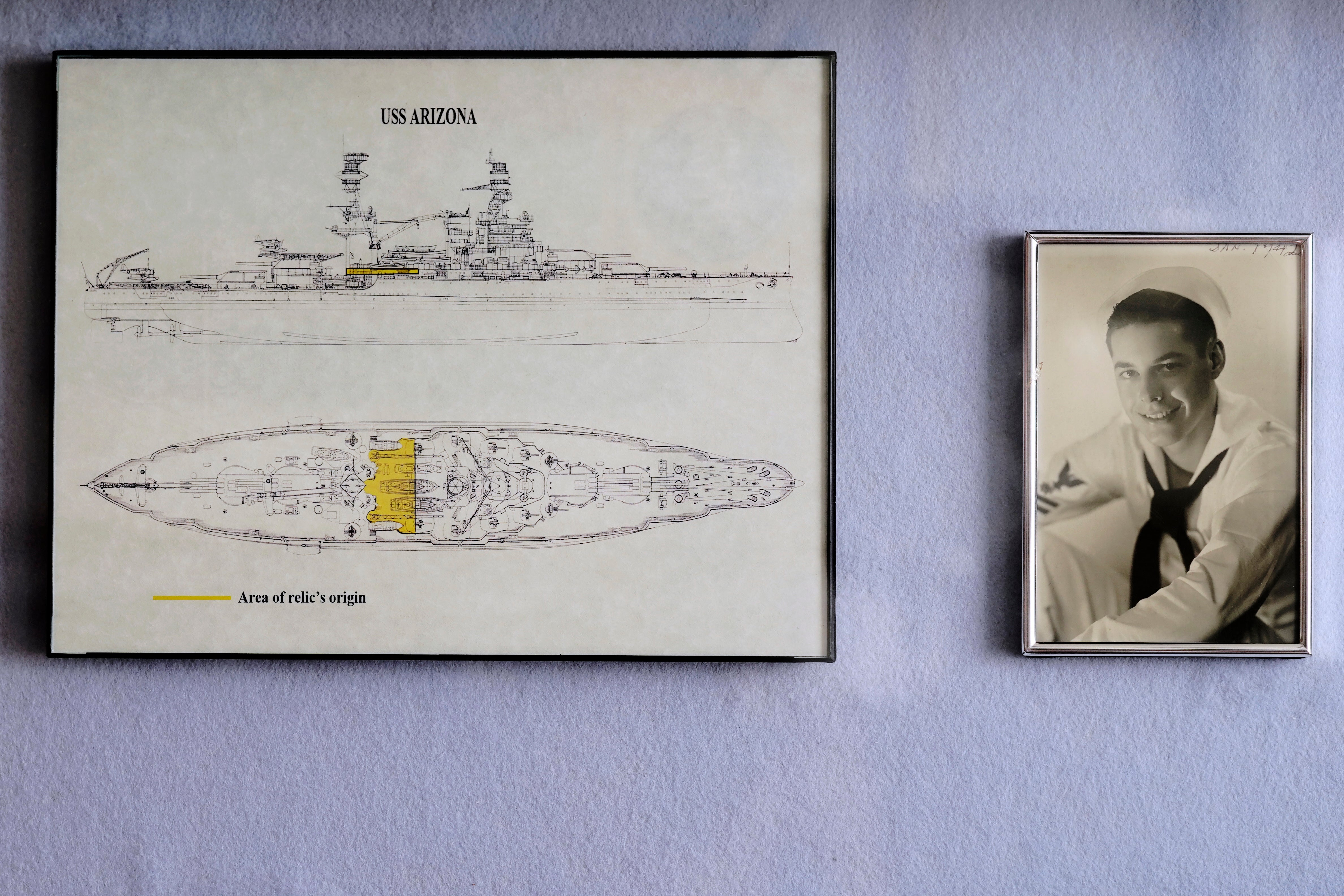Lou Conter: Last USS Arizona survivor of Pearl Harbor attack dies at 102
USS Arizona alone lost 1,177 sailors and marines, nearly half of those killed in the surprise Japanese attack

Your support helps us to tell the story
From reproductive rights to climate change to Big Tech, The Independent is on the ground when the story is developing. Whether it's investigating the financials of Elon Musk's pro-Trump PAC or producing our latest documentary, 'The A Word', which shines a light on the American women fighting for reproductive rights, we know how important it is to parse out the facts from the messaging.
At such a critical moment in US history, we need reporters on the ground. Your donation allows us to keep sending journalists to speak to both sides of the story.
The Independent is trusted by Americans across the entire political spectrum. And unlike many other quality news outlets, we choose not to lock Americans out of our reporting and analysis with paywalls. We believe quality journalism should be available to everyone, paid for by those who can afford it.
Your support makes all the difference.Lou Conter, the last survivor from an American battleship under attack during the bombing of the Pearl Harbor, has died at age 102.
Conter passed away at his house in Grass Valley, California, due to a heart failure, according to his daughter Louann Daley.
About 2,400 servicemen were killed in the Japanese bombing on 7 December 1941 of the American naval base in Honolulu, Hawaii, which launched the US into World War II. The USS Arizona battleship alone lost 1,177 sailors and marines – nearly half of those killed in the surprise attack.
In his autobiography The Lou Conter Story, he recounted how he joined other survivors in tending to the injured following the attack.

Conter was a young sailor standing watch on the quarterdeck of the Arizona when Japanese bombers swarmed the skies over the Hawaiian island of Oahu and attacked the US Pacific fleet at Pearl Harbor.
Within minutes, the Arizona exploded in flames, smoke and pandemonium. Conter, then a quartermaster third-class, was among the fortunate few hundred men to get off the battleship alive as it crumpled and sank at its berth.
He said one bomb penetrated the steel decks 13 minutes into the battle and set off more than a million pounds of gunpowder stored below, which lifted the vessel 30-40 feet out of the water.
Everything was on fire from the mainmast forward, he said during a 2008 oral history interview stored at the Library of Congress.
“Guys were running out of the fire and trying to jump over the sides,” Conter said, according to the Associated Press. “Oil all over the sea was burning," he described.
After Pearl Harbor, Conter went to flight school, earning his wings to fly PBY patrol bombers, which the navy used to look for submarines and bomb enemy targets. He flew 200 combat missions in the Pacific with a “Black Cats” squadron, which conducted dive bombing at night in planes painted black.
In 1943, Conter and his crew were shot down in waters near New Guinea and had to avoid a dozen sharks. A sailor expressed doubt they would survive, to which Conter replied, “baloney".
“Don’t ever panic in any situation. Survive is the first thing you tell them. Don’t panic or you’re dead,” he said. They were quiet and treaded water until another plane came hours later and dropped them a lifeboat.
In the late 1950s, he was made the US Navy’s first SERE officer – an acronym for survival, evasion, resistance, and escape. He spent the next decade training navy pilots and crew on how to survive if they’re shot down in the jungle and captured as prisoners of war.
Conter retired in 1967 after 28 years in the navy.
Later in his life, he became a fixture at annual remembrance ceremonies in Pearl Harbor that the navy and the National Park Service jointly hosted on the anniversaries of the 1941 attack.
In 2019, when he was 98, he said he liked going to the ceremonies to remember those who lost their lives. “It’s always good to come back and pay respect to them and give them the top honors that they deserve,” he said.
About 87,000 military personnel were on Oahu on 7 December that year, according to a rough estimate compiled by military historian J Michael Wenger.
The US Department of Veterans Affairs doesn’t keep statistics for how many Pearl Harbor survivors are still living. But department data show that of the 16 million who served in World War II, only about 120,000 were alive as of October and an estimated 131 died each day.
Last month, Richard C “Dick” Higgins, one of the few remaining survivors of the Pearl Harbor attack, died aged 102.
Higgins died at home in Bend, Oregon, of natural causes, granddaughter Angela Norton said. He was a radioman assigned to a patrol squadron of seaplanes based at the Hawaii naval base when Japanese planes began dropping bombs.
Additional reporting by agencies.
Join our commenting forum
Join thought-provoking conversations, follow other Independent readers and see their replies
Comments